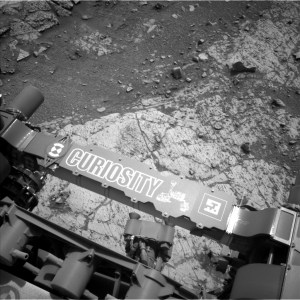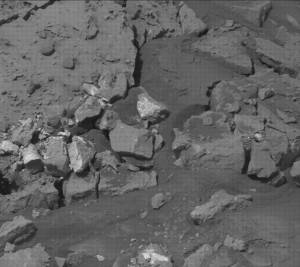- Perseverance Home
- Science
- News and Features
- Multimedia
- Mars Missions
- The Solar System
3 min read

The Mars 2020 Science Team meets in Pasadena for 3 days of science synthesis
It has become a fun tradition for me to write a summary of our yearly in-person Science Team Meetings (2022 meeting and 2023 meeting). I've been particularly looking forward to this year's update given the recent excitement on the team and in the public about Perseverance's discovery of a potential biosignature, a feature that may have a biological origin but needs more data or further study before reaching a conclusion about the absence or presence of life.
This past July, ~160 members of the Mars 2020 Science Team met in-person in Pasadena-with another ~50 team members dialed in on-line-for three days of presentations, meetings, and team discussion. For a team that spends most of the year working remotely from around the world, we make the most of these rare opportunities for in-person discussion and synthesis of the rover's latest science results.
We spent time discussing Perseverance's most recent science campaign in the Margin unit, an exposure of carbonate-bearing rocks that occurs along the inner rim of Jezero crater. As part of an effort to synthesize what we've learned about the Margin unit over the past year, we heard presentations describing surface and subsurface observations collected from the rover's entire payload. This was followed by a thought-provoking series of presentations that tackled the three hypotheses we're carrying for the origin of this unit: sedimentary, volcanic (pyroclastic), or crystalline igneous.
Some of our liveliest discussion occurred during presentations about Neretva Vallis, Jezero's inlet valley that once fed the sedimentary fan and lake system within the crater. Data from the RIMFAX instrument took center stage as we debated the origin and age relationship of the Bright Angel outcrop to other units we've studied in the crater.
This context is especially important because the Bright Angel outcrop is home to the Cheyava Falls rock, which contains intriguing features we've been calling "leopard spots," small white spots with dark rims observed in red bedrock of Bright Angel. On the last day of the team meeting, data from our recent "Apollo Temple" abrasion at Cheyava Falls was just starting to arrive on Earth, and team members from the PIXL and SHERLOC teams were huddled in the hallway and at the back of the conference room trying to digest these new results in real time. We had special "pop-up" presentations during which SHERLOC reported compelling evidence for organics in the new abrasion, and PIXL showed interesting new data about the light-toned veins that crosscut this rock.
Between debates about the Margin unit, updates on recently published studies of the Jezero sedimentary fan sequence, and discussion of the newest rocks at Bright Angel, this team meeting was one of our most exciting yet. It also marked an important transition for the Mars 2020 science mission as we prepare to ascend the Jezero crater rim, leaving behind-at least for now-the rocks inside the crater. I can only imagine the interesting new discoveries we'll make during the upcoming year, and I can't wait to report back next summer!
Written by Katie Stack Morgan, Mars 2020 Deputy Project Scientist at NASA's Jet Propulsion Laboratory









